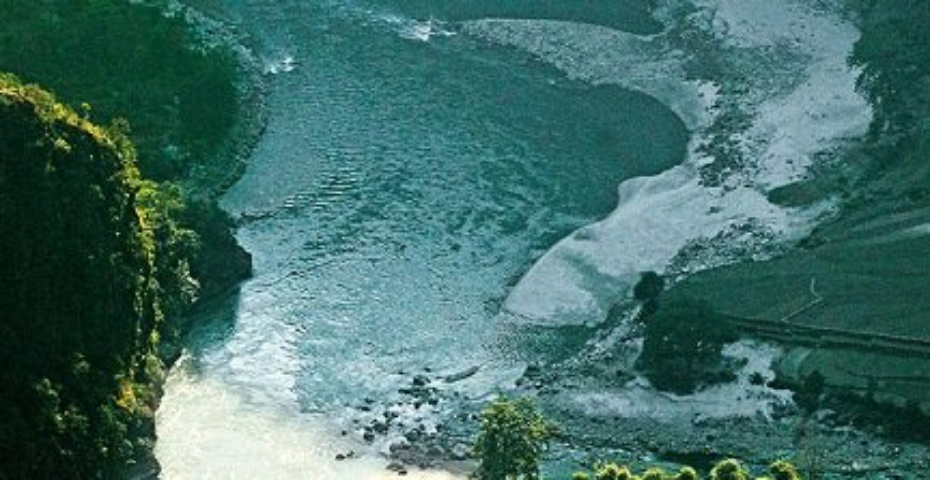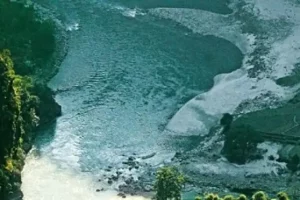Kathmandu: After three decades in limbo, the 6,480MW Pancheshwar Multipurpose Project in Nepal is finally getting a move on.
Talks in New Delhi between Indian and Nepalese officials have yielded an understanding to finalise the Detailed Project Report (DPR) of the project in the next three weeks.
The long-delayed undertaking, will be used not only to generate power but also for irrigation and flood control. The project is part of the Mahakali treaty which New Delhi and Kathmandu had signed in February 1996.
The development of the project on the Mahakali River is an integral part of the treaty which was signed amid controversy in Nepal because of perceived injustice to Nepal.
“There has been an agreement to conclude the DPR of the project in the next three weeks through the next meeting of the team of experts between Nepal and India,” Nepal’s Ministry of Energy, Water Resources and Irrigation said in a statement last week, following a New Delhi meeting of experts under the Pancheshwar Development Authority (PDA). The PDA has been formed for the execution and operation of Pancheshwar Multipurpose Project.
India’s state-owned Water and Power Consultancy Services (WAPCOS) had prepared and submitted the DPR of the project in 2016 but two sides were not on the same page on several issues, consequently delaying the finalisation of the DPR.
Nepal’s Water Resource Ministry also stated that the meeting also decided to instruct the WAPCOS to revise the DPR draft as per the understanding reached between the two sides in the current and past meetings in the spirit of the Mahakali Treaty and submit the report to the team of experts within the next 15 days.
Madhu Bhetuwal, joint secretary at Nepal’s energy ministry, who is also a member of Nepali delegation representing the team of experts told the Indian Narrative that a breakthrough could be achieved on DPR in the next meeting as the Indian side has agreed in principle to increase funding to develop the project on account of being a bigger beneficiary from the project particularly in the areas of irrigation and flood control.
Though two sides agreed to share costs as per the benefits since the signing of the Mahakali Treaty, they have not been able to iron out how much more the southern neighbour would invest compared to Nepal.
“The Indian side admitted that it has to fund more because of the higher benefit it will enjoy,” said Bhetuwal. “But we hope to reach concrete agreement on the matter in the next meeting.”
As per the existing DPR prepared by the WAPCOS, India enjoys 65 percent benefit in irrigation and 82 percent benefit in flood control.
India has a larger land mass to irrigate its land from the water of Mahakali, which is also known as Kali and Sharada River in India. The dam to be erected to develop the hydroelectric project will help to regulate the flow of water minimising the flood risks for India as a downstream country.
Kathmandu’s demand for higher Indian investment in the project compared to Nepal is in line with the Mahakali Treaty. When the treaty was signed, both sides agreed to the principle that the cost of the project would be borne on the proportion of benefits for both sides.
According to the Mahakali Treaty, the project will be designed to produce the maximum total net benefit. All benefits accruing to both the Parties with the development of the Project in the forms of power, irrigation, flood, control etc., shall be assessed, article 3 of the treaty says. “The cost of the project shall be borne by the parties in proportion to the benefits accruing to them. Both the Parties shall jointly endeavour to mobilise the finance required for the implementation of the project.”
Nepali officials said that the benefits to be calculated will be outside the existing water use by both sides.
As per the treaty, both sides agreed that there would be no sharing of existing consumptive users of water of the river. The provision had invited controversy in Nepal as India has been using higher quantities of water predating the treaty, terming the treaty unequal. “Existing use of water by both sides is not in calculation while talking about cost and benefit analysis of the Pancheshwar Multipurpose Project for each side,” Dinesh Ghimire, secretary at the Ministry of Energy, Water Resources and Irrigation told the India Narrative.
The two sides accelerated the talks on finalising the DPR of the project after they agreed to finalise the DPR in three months when Nepali Prime Minister Pushpa Kamal Dahal visited India from May 31 to June 3.
“The PDA shall submit the finalised DPR to both governments and the two governments and their relevant entities shall take the lead in arranging finance for the project,” the Nepali Embassy in New Delhi stated after the bilateral meeting. “The modalities of implementation shall be concluded within one year after approval of the DPR by the two governments.”
Since the highest-level agreement was reached during the Nepali Prime Minister’s visit to New Delhi, a meeting of the governing body (board of directors) of the PDA was held in Pokhara city of western Nepal in the first week of July.
The meeting had decided to extend the term of the team of experts by six months. Its term had earlier expired in March. The governing council meeting had also decided to hold the meeting of the team of experts immediately and the fourth meeting of the team of experts was also held in New Delhi.
“We hope to reach an understanding to conclude the DPR within the deadline as set by the Prime Ministerial level understanding,” said Bhetuwal.















